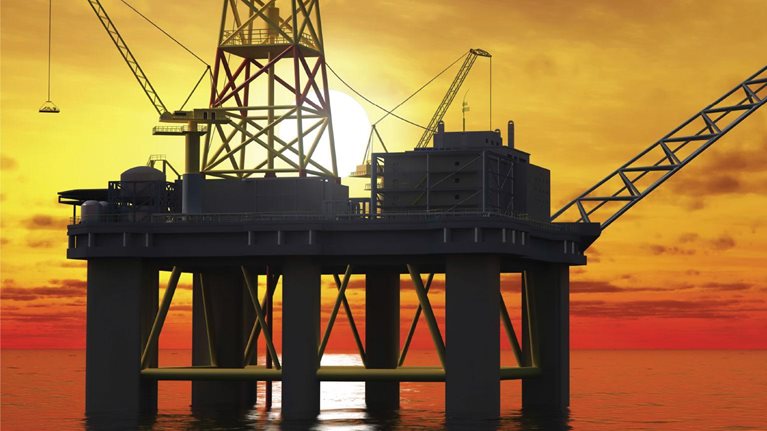Today’s oil and gas organizations were developed in a time of resource scarcity. To get at those hard-to-find, difficult-to-develop resources, companies built large, complex organizations with strong centralized functions. This model allowed them to tackle terrific technical challenges, manage great political and operational risks, and deploy scarce talent across the world as needed.
While these reasons were all valid during a decade of high growth, this organizational journey also led to substantial complexity for large players—adding cost, stifling innovation, and slowing down decision making (Exhibit 1). At the same time, independents like BG Group, Devon Energy, and EOG Resources grew increasingly successful in exploration and unconventional plays, but they still struggled to scale operations without copying the bureaucratic operating models of the majors.

Three game-changing trends are reshaping the industry
This organizational model is no longer sustainable with oil prices below $50 a barrel. More important, though, it is no longer necessary. We are now entering a time of great change, with major societal, technological, and political trends reshaping the environment in which oil and gas companies operate. We see three potentially game-changing disruptions that will lead oil and gas companies to rethink their operating models fundamentally:
1. A world of resource abundance is leading to sustained lower oil prices and a focus on cost, efficiency, and speed. Talent is no longer scarce, exploration capability is less of a differentiator, megaprojects are not the only way to grow, and market opportunities may only be economical for the earliest movers in a basin. Meanwhile, conventional, deepwater, unconventional, and renewable assets each require a distinct operating model that cannot be delivered optimally from a single corporate center.
2. Profound technological advances are disrupting old ways of working and enabling step changes in productivity. Jobs, including knowledge work, are being replaced by automation on a large scale, and those that remain require increased human–machine interaction. Data generation continues to grow exponentially, as every physical piece of equipment wants to connect with the cloud. This explosion of data—combined with advanced analytics and machine learning to harness it—creates opportunities to fundamentally reimagine how and where work gets done.
3. Demographic shifts mean that employees are demanding changes in the working environment and expressing concerns about the role of oil and gas companies in society. Millennials will constitute a majority of the US workforce by the early 2020s and have already started their climb into management and even executive roles. “Digital natives” in the driver’s seat will bring their own expectations of technology, collaboration, pace, and accountability. Oil and gas companies may need more profound changes to meet demands for meaningful work and social responsibility to attract the next generation of top engineering and leadership talent.
Five big ideas for the oil and gas organization of the future
In response to these disruptions, we see five big ideas for how organizations can adapt:
1. Organizational agility. The relentless pace of change puts a premium on the ability to adapt quickly to changing conditions—in other words, to be agile. In our view, agility combines two distinct concepts: dynamic capabilities, such as the ability to rapidly form cross-functional teams and reprioritize tasks to adapt quickly, and a stable backbone of core value-adding processes and cultural norms that provide resilience, reliability, and relentless efficiency.
While many companies tend to think they must make a trade-off between dynamism and stability, our research shows that agile organizations master both at the same time. This is not a simple transition, however. The agile oil and gas organization will look and feel very different from today (Exhibit 2):

-
Fluid teaming. Teams may form and dissolve on a weekly basis, coming together to achieve a quick success before moving on; individuals may work across many teams over the course of a year.
-
Loose hierarchies. The organization will be built around tasks and projects, rather than rigid hierarchies; teams may have no formal leader, instead leaving decision making to whoever has the relevant expertise.
-
Rapid prototyping. Teams will develop prototypes of new designs with a rapid, iterative “test and learn” mind-set, rather than going through cascading layers of review.
-
Instant feedback. Performance management may become crowdsourced in real time rather than conducted through an annual conversation with a single manager.
Would you like to learn more about our Oil & Gas Practice?
While other industries are further along the agility curve, many oil and gas companies already have pockets of agility. One oil and gas company, for instance, took inspiration from the software-development world and used a “scrum” approach to simplify drilling standards from 1,000 pages to fewer than 100. The company completed this exercise in a matter of weeks and cut drilling cost by 30 percent. Similarly, Statoil gave an engineering team full freedom to manage their own hours and working locations. This not only resulted in fun experiments like a remotely controlled submarine built from an empty beer case but also yielded the prototype of Statoil’s new Cap-X subsea system, which cuts development and operating costs by up to 30 percent.
At the same time, agility is not meant to be chaos. For the dynamic elements to succeed, they must be linked to a stable backbone. This will include a small number of simple but mandatory processes that are universally followed, a common culture to allow faster collaboration, and instant access to reliable data and the full company’s knowledge base. Aggressively standardizing and simplifying processes can allow companies to react quickly to unforeseen events while improving safety and productivity. For example, Schlumberger identified the relocation of its people as one of its central processes, as it ensures the company can deploy talent as rapidly as possible anywhere in the world. By rigorously standardizing the process, deployment time was reduced from two to three months to two to three weeks.
Perhaps the biggest change required in the backbone is to repackage and structure work to enable small teams to form, take a defined task, and execute it quickly. An example here is the default use of industry standards—with applications tailored by asset type—to create and enforce a simple but strong backbone. Such ideas are gaining traction in the industry, with 17 international oil companies (IOCs) and national oil companies (NOCs) currently working together, through the World Economic Forum, to agree on standardized procurement specifications and pilots for ball valves, subsea trees, and low-voltage switchgear.
2. Digital organization. Organizations have been digitizing for decades, but the digital revolution is still only just beginning. Within a few years, the Internet of Things will consist of more than a trillion sensors that generate and share data. Artificial intelligence and machine learning are no longer science fiction, and human–machine interaction is becoming ever more frequent. These innovations are about to change the way oil and gas companies work in three substantial ways:
-
A step change in safety and productivity will result from digitizing both technical and nontechnical work in a way that automates 60 to 90 percent of routine manual activity while identifying true best practices. This means better safety both because fewer people will be at risk and because automation is reducing the risk of human error. It also means great improvements in workforce productivity. For instance, one engineering, procurement, and construction (EPC) firm was able to use advanced analytics to sift through thousands of capital projects and discovered a few simple practices that improved engineering productivity by more than 20 percent. Digital is also an important enabler of organizational agility, for example, through instant access to information for frontline decision makers or via the real-time deployment of maintenance teams linked to predictive-maintenance algorithms—an Uber model for the oil field.
-
New job classes and capability profiles will rise, and many of these (such as data scientists, statisticians, and machine-learning specialists) simply don’t exist in oil and gas companies today. Within ten years, oil and gas companies could employ more PhD-level data scientists than geologists, either in-house or through partnerships with increasingly sophisticated vendors. Meanwhile, existing roles will be redefined. For instance, the automation of repetitive technical decisions will free up engineers to focus on more difficult analyses.
-
There will be new ways of managing people and performance. Many human-resources functions are already investing in advanced analytics to mine large data sets about their workforce—training history, productivity, calendar and email, surveys, social-media profiles, and so on—to identify the drivers of employee performance, recruitment, retention, and employee engagement.
3. The millennial-managed organization. Millennials are no longer a small group of new university graduates; in many oil and gas companies, they occupy managerial roles and are starting to climb into the executive ranks. As they rise through the organization, millennials will bring their own ideas about collaboration, accountability, and the use of technology. Leading companies will design an environment that meets the expectations of millennial leaders:
-
More flexible employment structures. These could include technology-enabled remote working and flexible working hours allowed by a results-oriented mind-set. Another trend is on-demand sabbaticals to support personal development via education, leisure, or time with family. Moreover, an attractive workplace will include alternative career paths with more rapid progress cycles (40 percent of millennials expect a promotion every one to two years), horizontal career moves, and a flexible take on career progress, with temporary step-downs.
-
A new working environment and culture. This could include the application of social-media tools in the corporate setting. For example, NASA, the Royal Bank of Scotland, and Virgin, among others, already use social networks such as Facebook, Slack, and Yammer instead of traditional intranet and file-sharing tools.
-
A positive external footprint. Millennials don’t just want personal career growth; they expect to make a positive contribution to society. However, 14 percent of millennials say they would not want to work in the oil and gas industry because of its negative image—the highest percentage of any industry. If companies want to attract the best and brightest, they must design ways for employees to make an impact beyond the walls of the company.
4. The decentralized company. Over the past 15 years, the corporate centers of most oil and gas companies grew significantly, as a way to manage risk, leverage scale, and share scarce technical talent. However, many of the forces underpinning the drive to centralize have now eroded. The collapse in crude prices has made large overhead costs unaffordable, and slow decision making has become a threat to long-term viability.
In parallel, the rise of lower-risk asset types, such as light tight oil, has changed the thinking about the role of the corporate center. In particular, success in unconventional and late-life operations requires local coordination and integrated decision making at the front line—not layers of review from corporate.
As a result, we expect some oil and gas companies to reverse the 15-year trend by decentralizing business and technical work, creating a corporate core that is radically smaller than today’s. For example, IOCs have already learned that they must copy successful US independents to profitably exploit unconventional resources and have set up separate units to operate these assets.
However, this will not be consistently felt across assets. Managing risk—technical, commercial, and operational—is still a compelling reason to centralize and is particularly evident for high-complexity plays such as deepwater, frontier, and liquefied-natural-gas (LNG) assets. We will likely see two dominant models arise: lower-risk assets employing a very lean corporate center with highly autonomous asset teams, and higher-risk, more-capital-intensive assets employing a much stronger center with deep functional capabilities and a strong emphasis on risk management (Exhibit 3).

Consequently, firms with a broad portfolio will feel the tension as they try to accommodate fast-paced, risk-taking operating models alongside slower, more risk-averse ones. We expect to see continued experimentation with models that recognize the differences, including separate business units or holding-company structures. To succeed, this requires truly differentiated governance and performance metrics. In extreme cases, we may even see total separations or spin-offs as the best way to manage the complexity—much as we have seen the long-term separation of downstream from upstream.

Capturing value from M&A in upstream oil & gas
5. A redefinition of what’s core. Companies are thinking again about what activities they need to control in-house versus those they manage via partnerships and supply-chain relationships. We believe the future oil and gas company will more closely resemble today’s industrial manufacturers, with a move away from tactical contractual arrangements and toward long-term strategic partnerships with a network of tier-one and tier-two suppliers. For example, prior to its acquisition by Shell, BG Group signed a long-term strategic alliance for front-end project engineering with KBR, an EPC company. Similarly, in a world of plentiful resources, access is no longer a key strategic differentiator, and large oil companies may increasingly rely on specialized explorers rather than in-house exploration teams for reserve replacement.
These developments are driven in part by cost and market pressure, as costs have risen to unsustainable levels and operators must find cheaper ways of working. Moreover, the current market is pushing oil-field-services-and-equipment (OFSE) players to aggressively market integrated service packages, resulting in new partnerships formed out of mutual necessity. Last, breakthrough digital technologies are being deployed in core upstream operations, disrupting the business model and creating entry points along the value chain for original-equipment manufacturers and OFSEs. As a result, oil and gas companies must take a much closer look at their relative value drivers to determine where to play.
Any one of these ideas would have far-reaching implications for oil and gas organizations. However, many of these ideas could be self-reinforcing. For instance, as oil and gas companies adopt a more agile way of working, they could become magnets for top millennial talent; millennials will accelerate the adoption of digital technologies, which could facilitate the dismantling of large corporate centers, which in turn allows for an even more agile workplace.
The pace of change is increasing on many fronts. Although it’s hard to predict where the industry will land, one thing is clear: oil and gas companies that are quick to equip their organizations for a new world will find themselves well ahead of their peers.


